As a buyer, how do you prevent Contract Value Leakage in your complex Telecom Spend?
Simple, Spend Analytics!
Telecom is increasingly a prominent feature in enterprise budgets. Annual spend on Telecom equates to an average 1-2% of enterprise revenue. Therefore, significant savings and efficiencies found in Telecom will make a significant impact on the bottom line. To beat bad data, information silos and increasing value leakage, enterprises must focus on spend analytics.
Today, a fragmented information environment characterizes Telecom category management for buyers:
- Contracts and invoices hold tens of thousands of line items containing references to different definitions.
- Definitions made up of implied rules defined somewhere else across the contract or standard supplier T&Cs.
- Implied rules are tangled in an undefined web to other sets of definitions.
- ‘Shifting sands’ of contract variations and regular updates of standard supplier T&Cs.
As a result, Telecom Category Management has no standardization and will mean something different depending on who you ask. Eliminating value leakage is not seen as a routine operational activity today because there has been no feasible way to systemize operations. When enterprises perform related activities, they are performed manually and only done at significantly timed events due to the high time, effort, and specialization required to complete the work. These significantly timed events typically are:
- During the RFQ / negotiation stage, when price benchmarking is completed to give the buyer an indication of what they should be paying.
- Resolving a longstanding commercial issue, when billing issues have compounded to the point that extraordinary intervention is required to get things under control.
With an annual spend of £1m on communication services, our experience uncovered that the average enterprise unnecessarily spends over £320k, traced back to the failure in not operationalizing three key areas of value leakage:
- Demand management
- Consolidating global assets and accounts
- Complex order tracing
Demand management is the ability to accurately understand the target amount of usage an organization is going to make from the start of a contract, set in place effective policies and monitoring processes to measure conformance to targets and holistic auditing to identify outliers immediately.
Consolidating global assets and accounts is the ability to create a consolidated view across all of a buyer’s accounts, subsidiaries, global providers, different technology-based assets, and connect that with their internal organizational structure.
Complex order tracing is the ability to integrate and track the real-world performance of projects and purchase orders against multiple fulfilment stages, changing requirements, and contractual performance obligations against what eventually lands on the buyer’s invoice.
Here’s an image of how these areas connect:
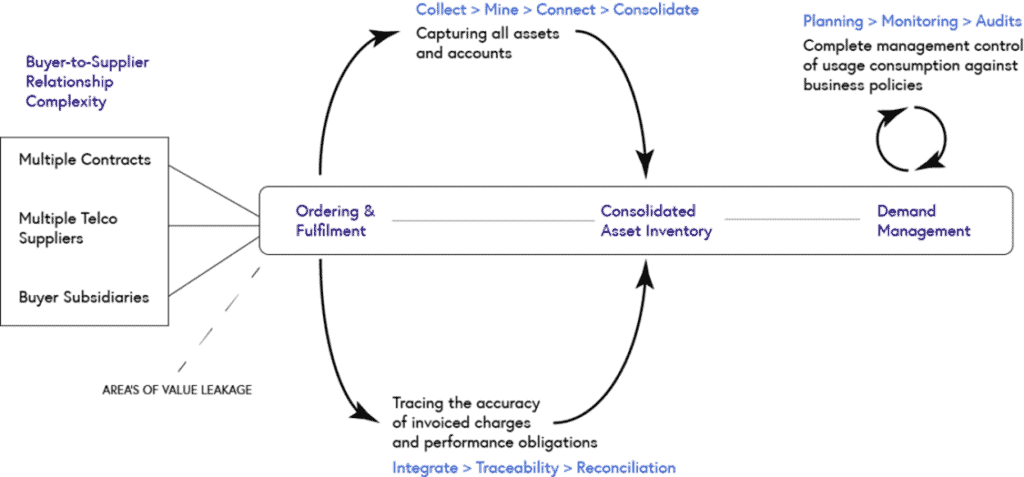
What would a systemized activity look like for eliminating value leakage?
What effective Demand Management looks like: Demand Planning > On-going Monitoring > Holistic Audits
In-scope services = Usage-based services includes sim-based fleets of Mobile Handsets, M2M and IoT, VoIP telephony in call centers, Traditional PSTN voice services.
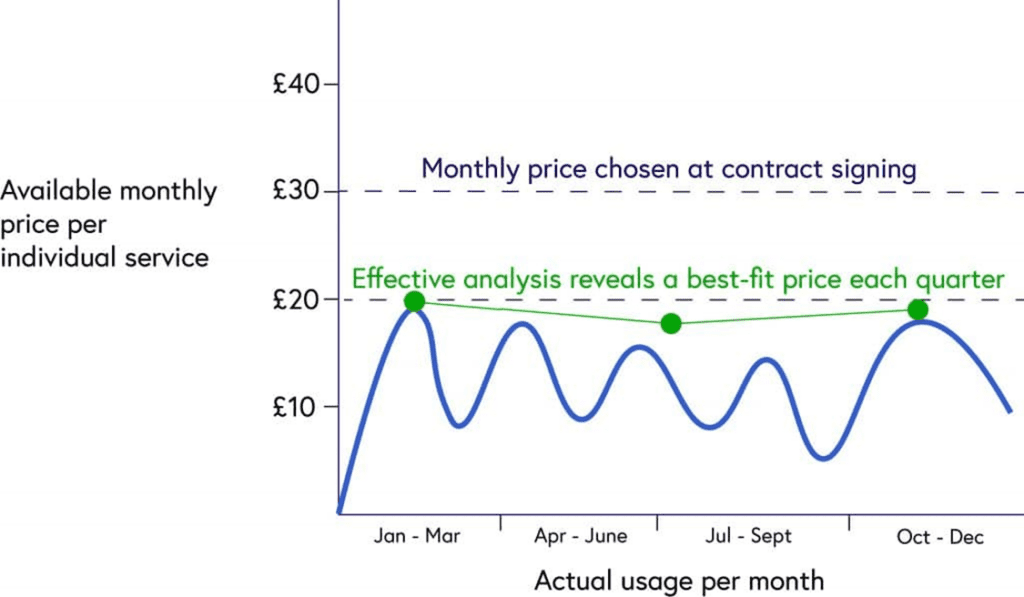
Demand planning is similar in concept to a price benchmark, with added data points against product categorizations matched to price points from the buyer’s contract and comparison across multiple suppliers T&Cs. During the negotiation stage, having a precise mechanism to communicate historical pricing performance and compare the equivalency of competing bids carries a clear commercial advantage. Post contract implementation, this same activity on a quarterly basis can set internal targets for the buyer’s consumption behavior and measure whether the products purchased from the contract is suitable to meet this demand.
We find enterprises unwittingly plan to pay 15-35% too much for their usage-based services because they don’t perform this activity systematically.

If demand planning is setting the target, On-going monitoring is making sure that the real trend of consumption fits the buyer’s planning. Natural behavioral patterns can take an organization’s usage to very unexpected levels, which generally won’t become apparent until it’s too late in “tip of the iceberg” fashion. Having effective monitoring processes allows for significant variations to be picked up early and investigated accordingly.

Which leads to Holistic Audits. It’s vital to have effective controls that can audit everything that can have some bearing on the performance of a buyer’s demand planning. “Everything” is a broad term that covers items like:
• The Telco mistakenly charging your services outside of a service’s usage allowance or invoicing charges at a rate that doesn’t match the buyer’s contract (having worked in the Telecom industry for ten years, you may be surprised how widespread this issue is).

• Internal services abuse, such as employees calling up premium sport bets hotlines or excessive data usage (I once spotted a person reselling the unlimited data usage on their handset as their own unlicensed Internet Service Provider).
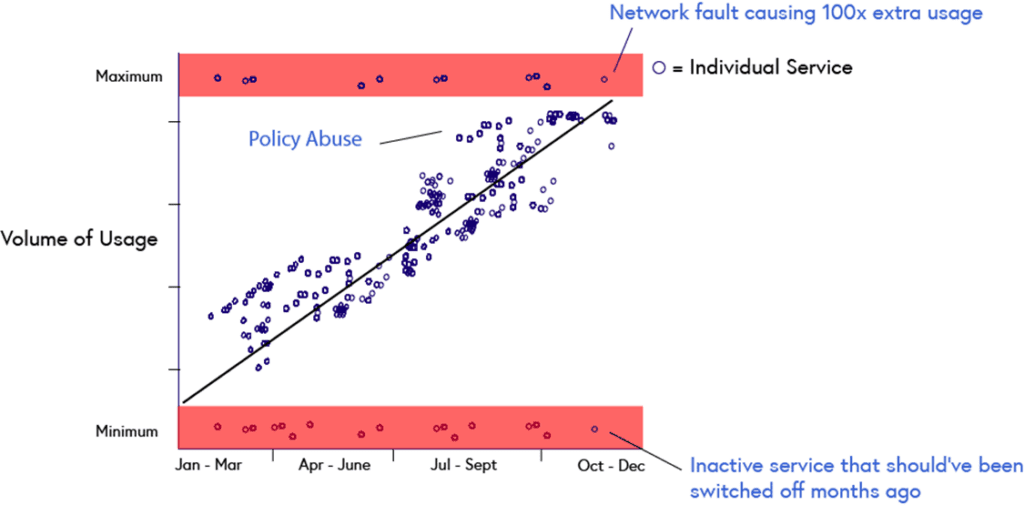
• Network issues, like not noticing a configuration error causing a massive spike in data usage
Holistic Audits have the added benefit of robust assurance that every invoiced charge reconciles to a known service and is in-line with the pricing schedules on the buyer’s contract.
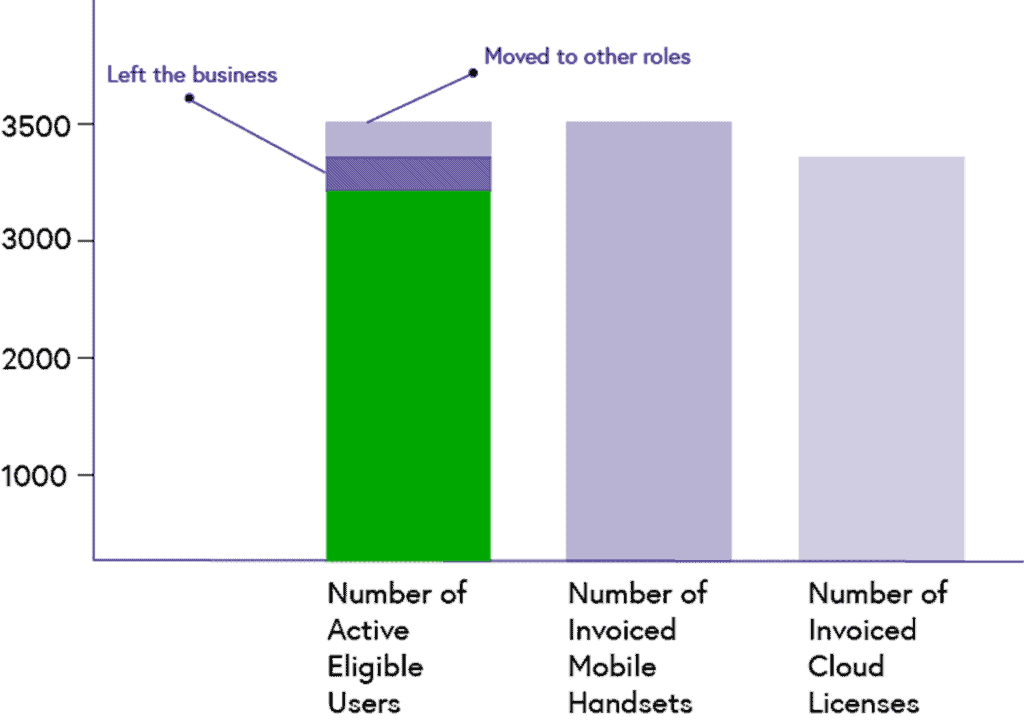
What effective consolidating of global assets and accounts looks like = Collect > Mine > Connect > Consolidate
In-Scope services: All chargeable assets and accounts
Consolidating all assets and accounts is the ability to create a consolidated view across all of the buyer’s accounts, subsidiaries, global providers, different technology-based assets, and connect that with their internal organizational structure.
Collecting data is gathering all existing invoices as they exist today and digitizing the format of invoice headers and line items. Digital formats may already be available in a buyer’s existing online reporting systems, in which case it’s a matter of centralizing the information into a common database.
Mining data is the process of examining the invoice headers and line items to detect commonalities. Commonalities can be found in different forms and via different approaches:
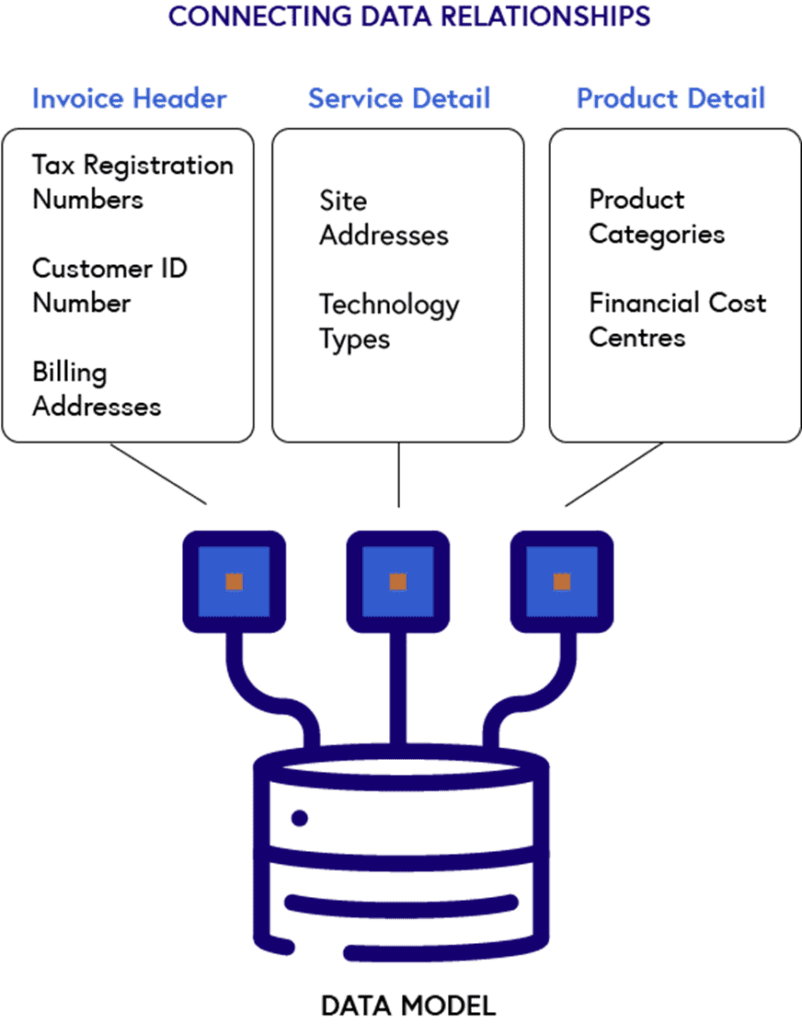
- Direct relationships: comparing the company’s tax registration number or customer identification numbers listed by the supplier.
- Indirect relationships: comparing the site and billing addresses across invoices.
- Virtual relationships: comparing technology types and product categories that are not explicitly defined on the invoices.
As relationships are identified, they can be connected via a data model allowing for repeatable use and an established mechanism for ingesting future invoices.
The target end state is a common platform that allows users to perform reporting and analytics at any level of detail. Common use-cases are:
- Accounting processes: tracking P&L performance and allocating expenses across an organization at cost-center & site level
- Asset management: tracking the lifecycle and facilitating IT ownership of an organization’s assets
It’s important to note the transformative potential of an accurate consolidated view of assets and accounts, which is enabling a re-imagining of existing processes to work with a simpler number of steps and a greater focus on improvement rather than just fulfilment.
For instance, if your organization operates globally, chances are accounting and asset management practices are performed in isolation while only aggregate data is collected in a central location. Having complete access to de-aggregated data with the appropriate classifications, and mapped to the buyer’s organization’s unique internal structure, allows for a central service function to automate this work as needed while pushing out improvement opportunities to local sites.
What effective Complex Order Tracing looks like: Integrate > Traceability > Accurate Reconciliations
In-scope services: Complex technology types (Internet Protocol, Managed Data Networks etc.)
Complex order tracing is integrating a buyer’s numerous run sheets of in-flight projects and purchase orders against their contract’s performance obligations and invoiced charges. Run sheets can also include records from the Telco in order to determine a common view between the buyer & Telco.
Why is this important? While the role of a Project Manager to track and deliver the technical outcomes across the lifetime of a project. there is no defined role for someone to follow how every change impacts the end invoice. In the absence of certainty, this leaves a level of assumption that all charges are correct on the first invoice, creating a confusing mess of historical items to pull together when a significant billing issue appears.
Significant billing issues are rarely isolated; they are an accumulation of smaller billing issues that compound over time. This is where spend analytics can help. By the time a significant billing issue arises, it creates costly operational overhead between the Telco and the buyer while they try to work through the contract and billing records.
There are multiple fulfilment stages of a complex order: Design > Feasibility > Await Dependent Orders > Installation
Each of these stages is ripe with possibility to change the order requirements. Feasibility studies return that a particular bandwidth is not available, causing a re-organization of SLAs and CPE, which can have a flow-on effect to the other orders under management.

A completed integration looks like accurately detailed Pro-forma at any stage of the order. Performing Complex Order Tracing regularly creates traceability of the changes that have occurred and accurate reconciliations to what should be invoiced. This activity ensures delivery of all performance obligations, consistent accuracy of invoices, and avoids considerable time and effort when a significant billing issue occurs.
Spend Analytics Conclusion
These activities don’t exist as a systemic process today due to the highly manual and fragmented information out there in complex procurement operations. When buyers manually attempt these activities, they are costly and time consuming to run and don’t yield consistent outcomes to the buyer. As a result, buyers experience:
- Sub-optimal spend allocation to vendors
- Under-utilized cost-saving opportunities
- Under-management of the Telecom category
In a similar sense to Personalised Medicine, there must be a way to interpret and connect large amounts of fragmented information to diagnose issues in an accurately detailed and reconcilable fashion. Otherwise, there is a considerable risk of taking generalized action on an issue that requires a personal approach. Imagine if we only received a WebMD questionnaire whenever we went to the doctor.
The way forward is to view these activities from a spend analytics, data science and engineering perspective. With the right tools and methodologies, buyers can connect fragmented information in an accurately detailed and reconcilable fashion. Buyers can pave the way for a systemized approach to eliminating the critical sources of value leakage on your contracts.
Thinking Machine Systems has designed a unique intelligence-driven methodology to automate the interpretation and connection of spend analytics.

